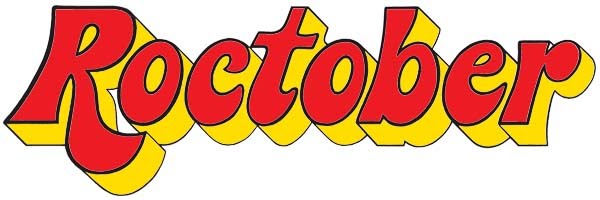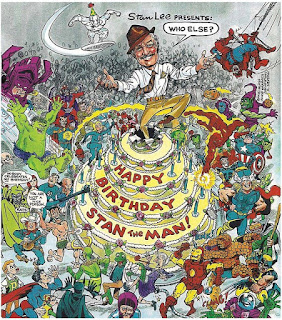(TwoMorrows, 2012) Marie Severin is definitely one of the most interesting figures in comics history, but she is also possibly one of the greatest comic book artists. One can make a strong case that we don't know the answer to the latter declaration because of sexism, but it is also possible that her other talents kept her from that fate; that she made a more secure living not going that path; or even that she just didn't want to do it. Unfortunately, we do not know the answer to that question after reading this book, but considering the resources available, we are fortunate Mr. Cassell and Mr. Sultan dedicated themselves to give us even this much. Like all TwoMorrows publications, reprints of rare, wonderful artwork makes this book a genuine treasure. Unfortunately, like many (certainly not all) of TwoMorrows' books, this isn't really a book, more like a squarebound fanzine, and a lot of this is transcribed interviews with figures who had varying levels of familiarity with Marie's work, plus some reprinted archival interviews, and a chapter structure that arranges interviews and short blurbs and artwork into categories. What we do learn is about the path of her fascinating career. As sister to the great (greatest?) Western comics artist and Cracked cover/parody king John Severin, Marie was introduced into the industry and became a colorist for the legendary EC horror, war, and humor books (including the original run of MAD). Her dynamic artistic talent meant that the colors deftly enhanced the frights, intrigue, excitement, and laughs, but when an anti-comics crusade led to MAD becoming a black & white magazine she no longer had a role at the publisher (more on that later). She ended up with Marvel where her value, if not necessarily her talents, were recognized. Marie had an amazing design sense, was a remarkable caricaturist, was incredibly funny, worked quickly and very hard, and was a good teammate. She was on staff, coloring or overseeing others doing the coloring, but also made last minute corrections, did the artwork for house ads, special projects, and fan club material (she is credited here as the artist for the delightfully infamous Hulk sweatshirt where he is pulling the toy ducky on the back of the shirt), and could be relied on for pretty much anything visual needed at the company. She did do several runs of full issues on major comics in between other artists, had her own comic briefly (Beware! The Claws of the Cat), paired with her brother for the sublime Kull series, and most prominently, had a run where she was the signature cover artist across almost all titles (Gil Kane and Jack Kirby both had long stretches where they did most of the covers across titles as well, it was a thing they did back then). This was because she genuinely, innately knew how to design a perfect, dynamic comic book cover. This was an incredible skill, and what I did not know before I read this book was that she also for a long while designed nearly every Marvel cover, drawing out loose, gorgeous preliminary covers for other artists to follow, which are now the original comics artwork I most covet. She was truly one of the masters of superhero cover art (Kirby fans are familiar with a solid Kirby Thor cover that was rejected and replaced with a brilliant Severin cover of a sword-yielding Loki lording over a supplicant Thunder God...Loki's sneering face on that cover is a high point in Marvel art history). So, should she have been given more chances to be the lead artist on Marvel books in the 60s and 70s, and did sexism hold her back? Clearly there was sexism, but drawing comics was a thankless, low paying job with little security. Even the greats at Marvel, Jack Kirby especially, were freelancers on the hustle. Did being a staffer provide a better, or at least a more secure, living? It is unclear from this book what the financial stakes were. Also, was her wide range of talents too valuable to lose by making her a full time penciler? Perhaps there was no path at Marvel that would have brought her more security and riches. However, as is the case so frequently in TwoMorrows publications, the most knowledgeable, insightful input comes from Mark Evanier, who speculates that her natural humor and incredible caricaturing (frequently used primarily for office morale, as her coworkers valued the cartoons she made of them, even the ones that were truth-tellingly critical) meant that EC should have hired her back to work at MAD. They knew her and knew what she could do and just were seemingly unable to conceive of a woman being a valuable part of the Usual Gang of Idiots. MAD was second only to Playboy in pay rate, and Marie could have really done well if she was doing some movie parodies and article illustrations for them. Marvel created a few short-lived comics that applied the early 50s comic book MAD approach to toothless parodies of Marvel characters or current pop culture (Not Brand Ecch, Spoof, Arrgh!), and that became Marie's signature work for the company. When Marvel did Crazy, their knockoff of MAD magazine in the 70s and 80s, she did great work, but the pay was miserable. Though she held Marvel together during some of its most important eras, maybe her glory could have came elsewhere. Or maybe she wouldn't have wanted to do that. I don't know from reading this book, which interviews her without getting at a lot of insights, and does not pretend to be a deeply analytic, research intensive biography that is in a position to make any kind of bold statements or hypothesis (Evanier's theory is an outlier). And that is what it is. As I write this I notice that copies of the book are on super sale at TwoMorrows site so I definitely think you should get this, even if it just to see the sketches, the illustrated envelopes to friends, the rare layouts, the original art reproductions (including color guides and commissions), and a beautiful color section. Her legacy deserves more (maybe a coffee table collection of her cover breakdowns?) but it is great that we even got this, and I'm grateful the author and publisher got the ball on Marie studies rolling.
Monday, February 15, 2021
Marie Severin - The Mirthful Mistress of Comics by Dewey Cassell with Aaron Sultan
Subscribe to:
Post Comments (Atom)









No comments:
Post a Comment